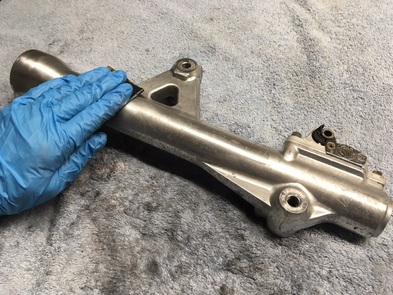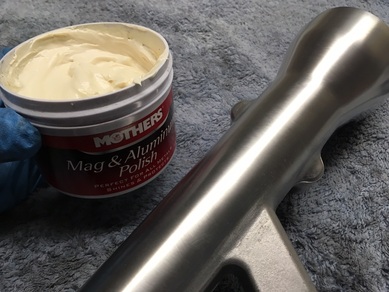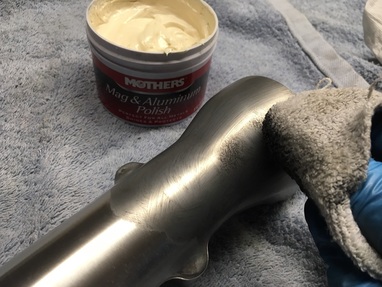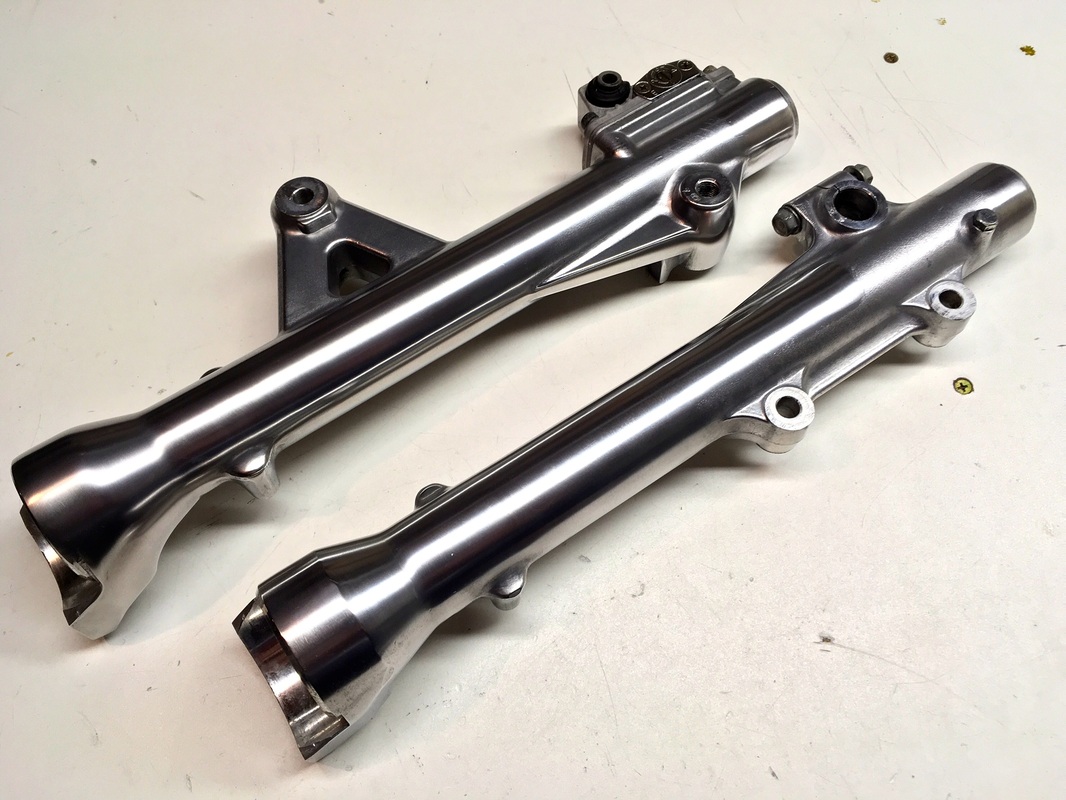
This won't do, so my solution is to first strip the clear-coat with chemical stripper followed by a wet-sanding with 320-grit, then 800-grit. The 320 will remove the pockmarks of corrosion and the 800 eliminates sanding marks.

For some parts I'll go with even finer sanding, up to 3000, but I liked the dull sheen that the 800-grit provided on these legs — very factory-like. Here's the sanded part ready for polish.

To try and preserve the finish we could have these parts clear coated with powder coat, but I've chosen to leave them bare and encourage the owner to give them a buffing once a year. They live in a harsh environment where stone chipping is a fact of life, and they're very easy to access for a quick cleaning/polishing.



 RSS Feed
RSS Feed